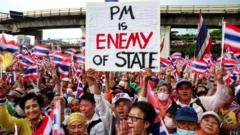In a landmark decision, lawmakers in Mexico City have overwhelmingly voted to prohibit traditional bullfighting, marking a significant shift toward animal welfare in the nation renowned for this centuries-old practice. The legislation, which passed with a decisive 61-1 vote, bans the injury or killing of bulls during these events, allowing for a modified approach referred to as “violence-free bullfighting.”
Mexico City Embraces Animal Welfare by Banning Traditional Bullfighting

Mexico City Embraces Animal Welfare by Banning Traditional Bullfighting
In a historic legislative move, Mexico City has permanently outlawed traditional bullfighting, prioritizing animal welfare and public sentiment.
The new rules, backed by President Claudia Sheinbaum, allow bulls to participate in structured, non-lethal encounters, where the duration in the ring is strictly regulated and bullfighters are limited to using just capes. “I have a deep commitment to animal welfare,” stated legislator Xochitl Bravo Espinosa, a key advocate for the bill. She emphasized the necessity of finding a compromise to support those whose livelihoods depend on the bullfighting industry, including vendors near La Plaza México, the world’s largest bullfighting arena.
However, advocates of traditional bullfighting expressed fierce opposition, demonstrating outside the legislature to voice their discontent. In a joint statement, several bullfighting groups warned that this legislation represents only the onset of a larger struggle to protect their tradition. As this cultural symbol faces unprecedented changes, the government of Mexico City takes critical strides toward compassionate practices while aiming to preserve cultural heritage amidst shifting public consciousness.
However, advocates of traditional bullfighting expressed fierce opposition, demonstrating outside the legislature to voice their discontent. In a joint statement, several bullfighting groups warned that this legislation represents only the onset of a larger struggle to protect their tradition. As this cultural symbol faces unprecedented changes, the government of Mexico City takes critical strides toward compassionate practices while aiming to preserve cultural heritage amidst shifting public consciousness.






















